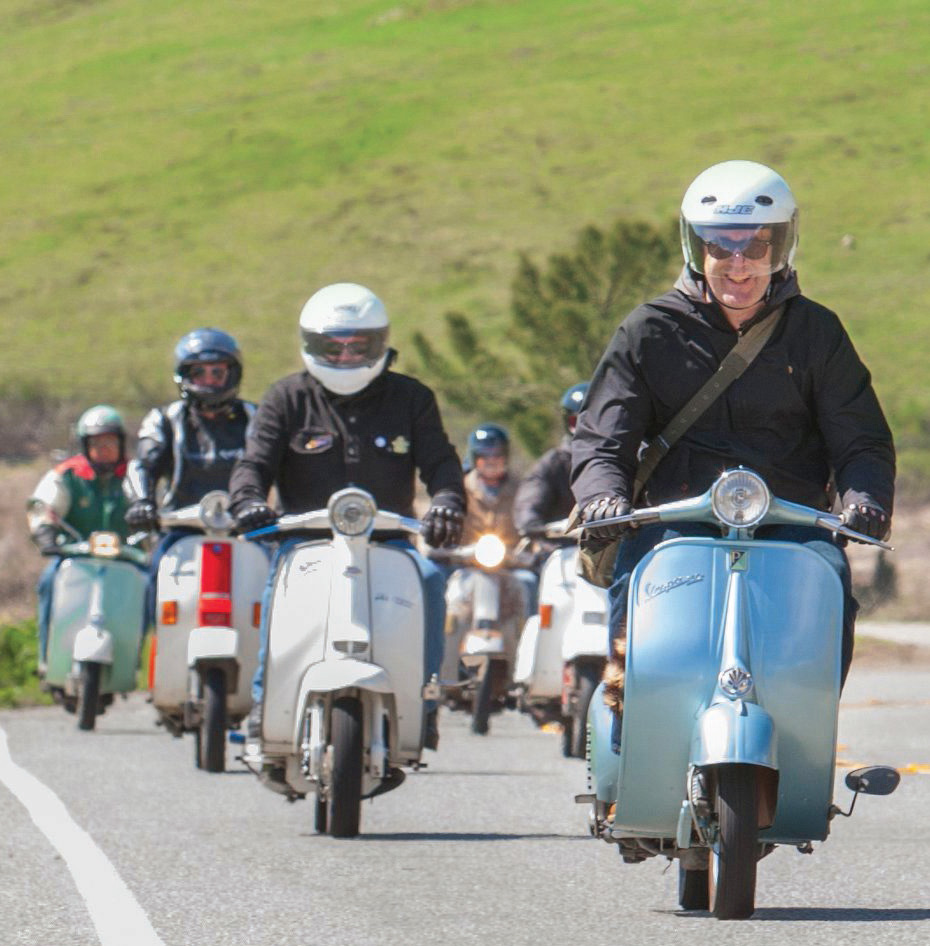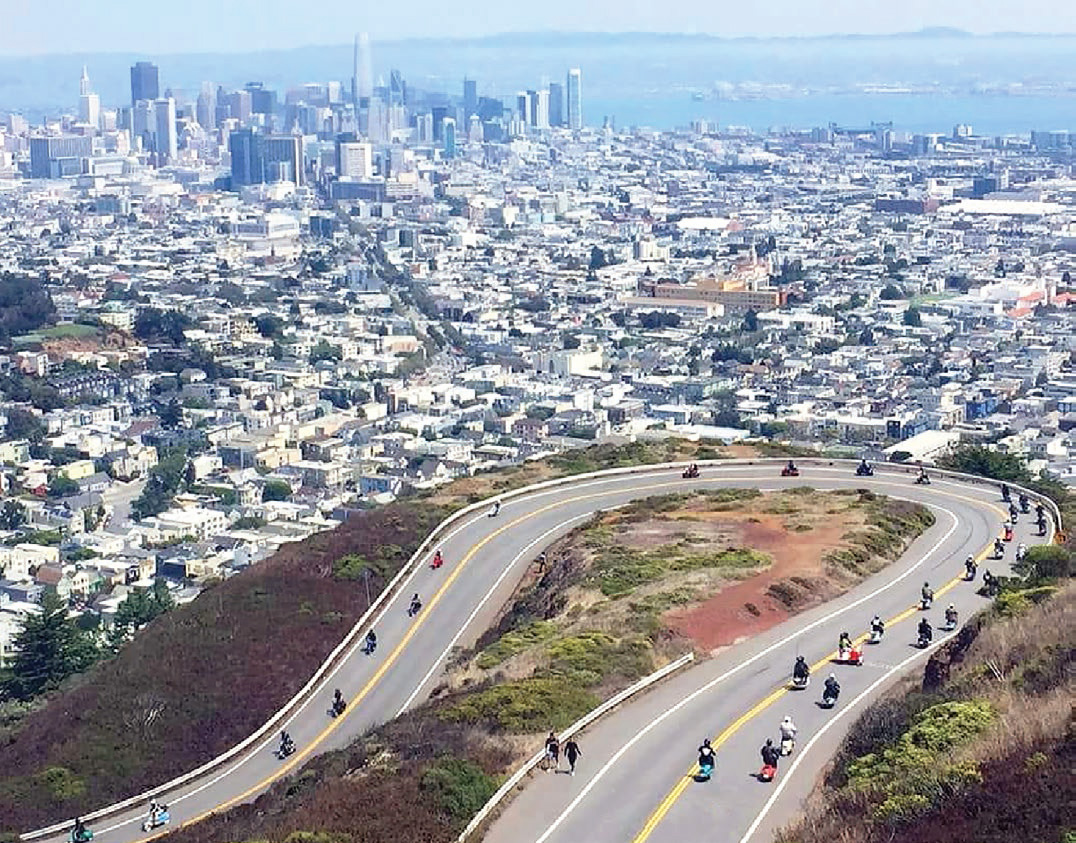Scooters are for Riding
 |
With kickstands in place, two curvaceous scooters stood showcased in front of a pair of Eichler homes as 1,500 tourgoers strode past en route to the San Mateo Highlands Eichler home tour.
Jim Palmer, who lives in a Highlands Eichler and was team leader for that 2017 extravaganza, made sure all was running smoothly, zipping from spot to spot on his 1965 Lambretta 150 Special.
On display were a 1957 Vespa 150 VB1 and a 1964 Lambretta 150 Silver Special. Vespas and Lambrettas are "mid-century icons of industrial design," says Joe Barthlow, president of the Lambretta Club USA.
No one on the tour that day would have argued.
"Scooters," rider Pelayo Llamas says, "are kind of sexy."
 |
But if you're thinking that, here in the 21st century, vintage Vespas and Lambrettas serve as mid-century modern decorative baubles, like Nelson clocks or Noguchi tables, think again.
When have you seen a Noguchi table racing along La Cañada Road—between San Mateo and Woodside and past Crystal Springs Reservoir—attached to the earth by only two thin tires, with a helmeted rider leaning into the curves, tools on board in case something goes wrong, and trailing wisps of blue smoke?
That's one of Jim Palmer's favorite routes, beginning downhill from his home. Just recently he and several friends came together for the ride, pausing for burgers at the 167-year-old Alpine Inn in Portola Valley.
"That's a pretty good afternoon," Palmer says.
Scooters are for riding.
 |
|
|
"I don't like to call myself a collector," says Llamas, an Oakland resident who owns a sea-foam green 1965 Vespa Gran Turismo, and a 1950 Lambretta Li 150, plus a motorcycle. "It's not something to look at and polish. I just get the most joy out of riding it. I ride them daily."
"When you're on a scooter," says Janel Holiday, a San Francisco interior designer who owns two Vespas and a 1966 Lambretta SX 150, "you don't have distractions. You're not listening to the stereo. You're really stripped down. It's just you and this fast-moving machine underneath you pushing you through the world."
And scooters are for riding with others. Breathless newsreel commentators from their birth called Vespas "social appliances," and promo footage showed not heroic, isolated riders cruising along the Amalfi Coast, but groups of three, ten, 12, 20 young men and women riding in a jolly manner together through parks, on city streets, and, yes, along various Italian coasts.
"Elegant, youthful, economical!" the narrator cried.
 |
|
|
Though born in Italy in 1946, from the start scooters have been international in appeal, and even in their genesis. During World War II inelegant but hardy-and-fast Cushman scooters from Lincoln, Nebraska were dropped by parachute into Italy for use by GIs. Italians noticed.
Enrico Piaggio, who ran Piaggio & C. building aircraft, saw the scooter's value as low-cost civilian transport and worked on prototypes with industrial designer Corradino D'Ascanio. D'Ascanio disliked motorcycles, which he saw as charmless and dirty. The idea was to design an anti-motorcycle.
Unlike a motorcycle, whose riders sit astride a motor that spews smoke and grease onto their bodies, Vespas enclosed both motor and drive train, allowing fashionable Italians to wear fashionable clothes while commuting to work—or to nightclubs.




